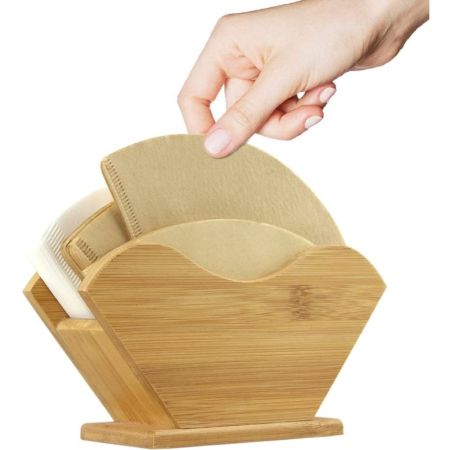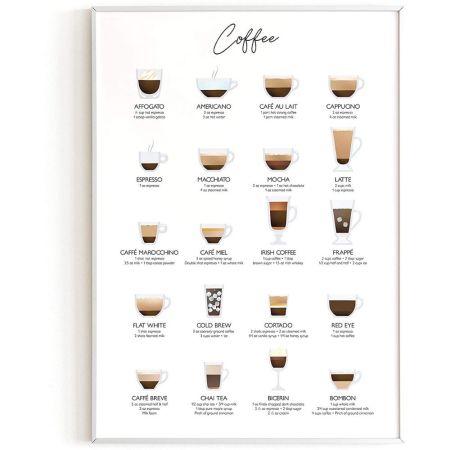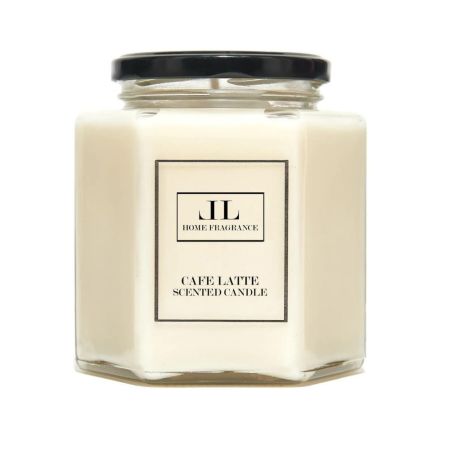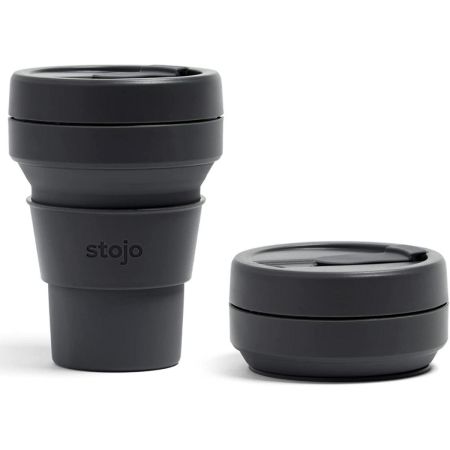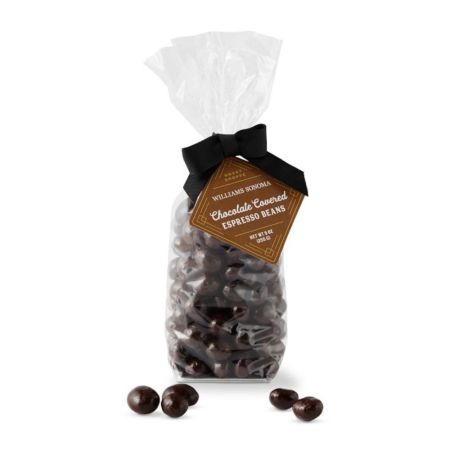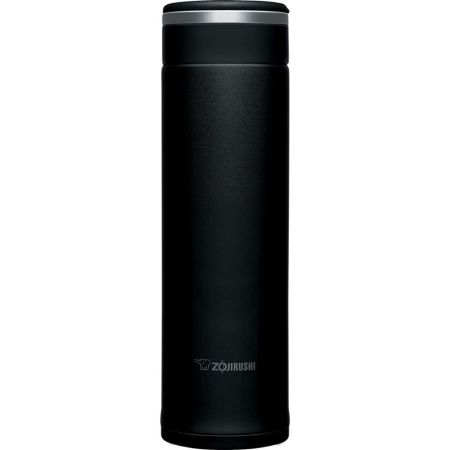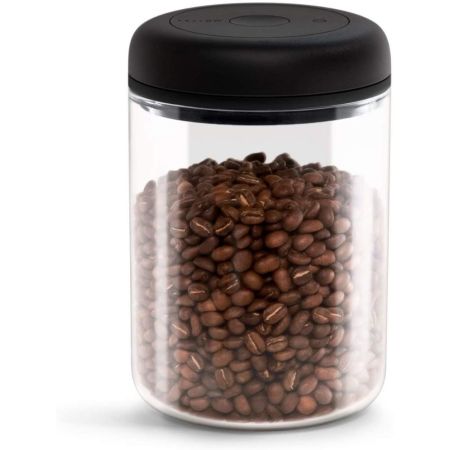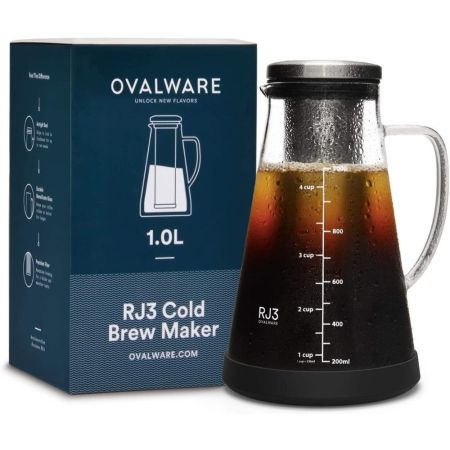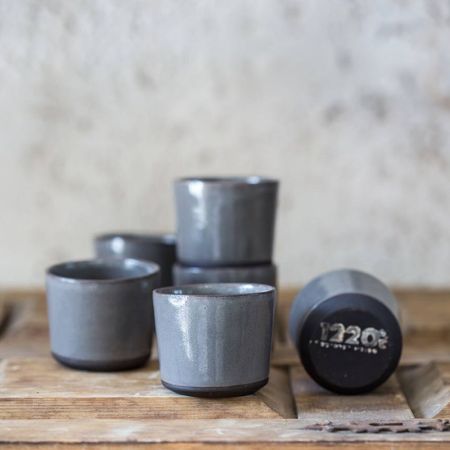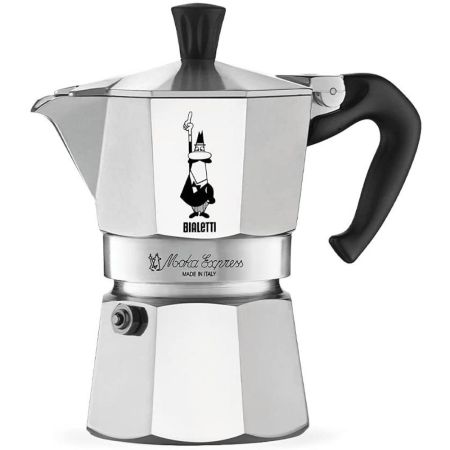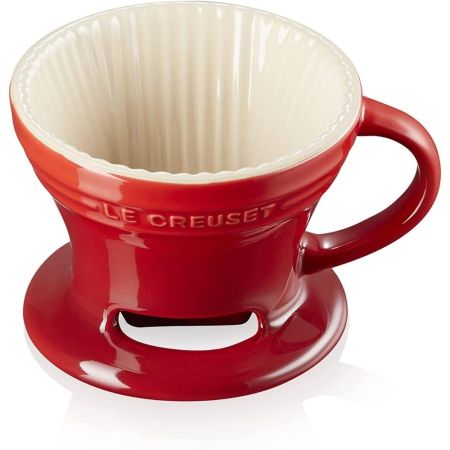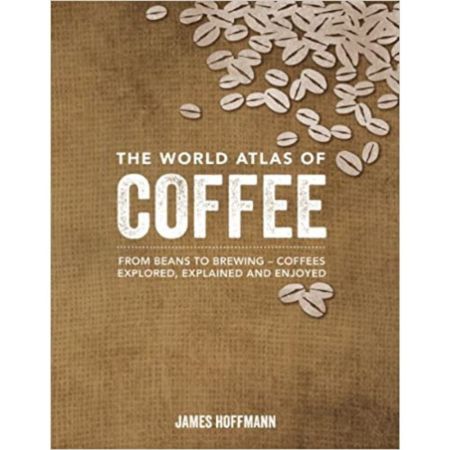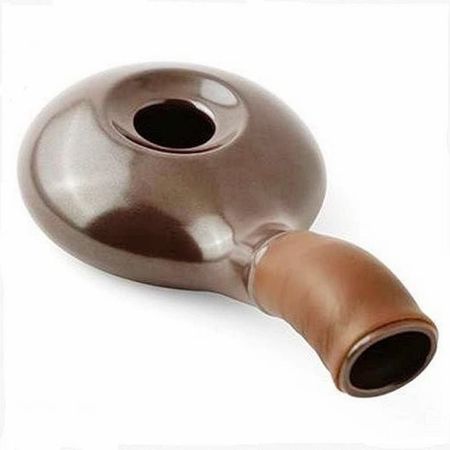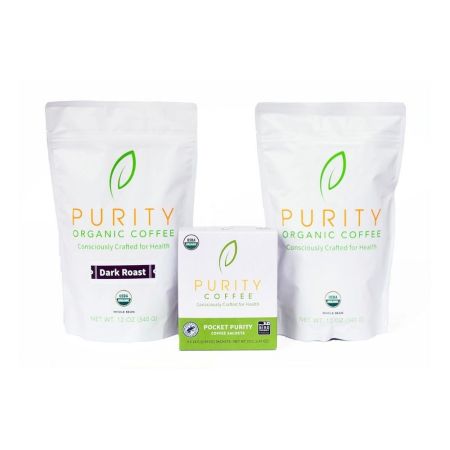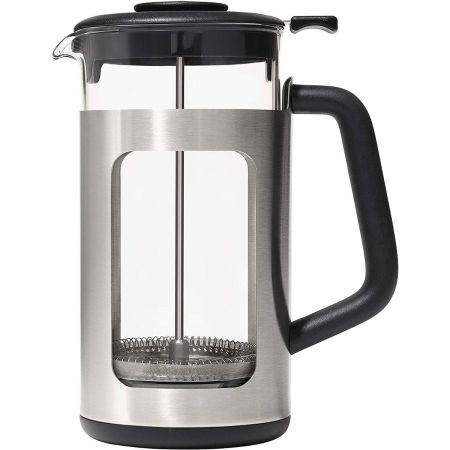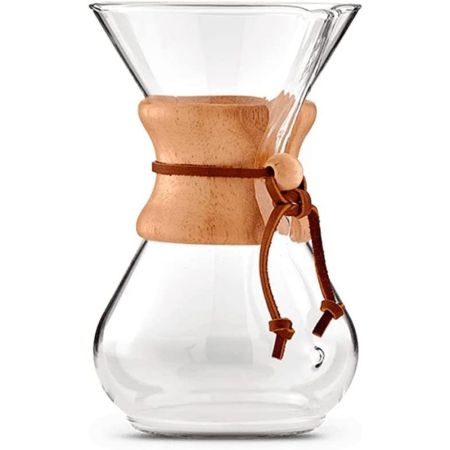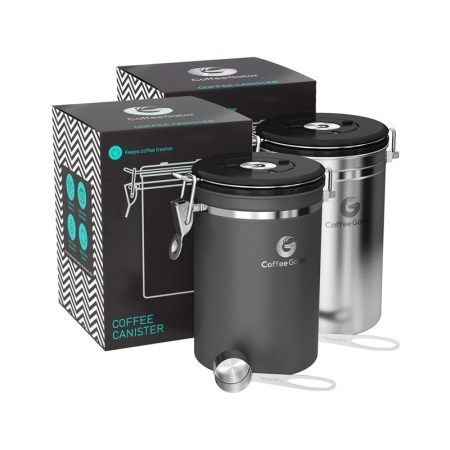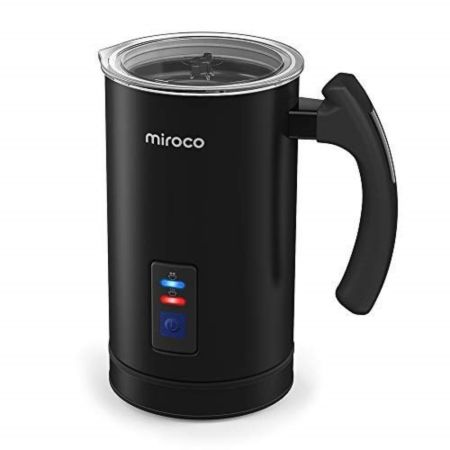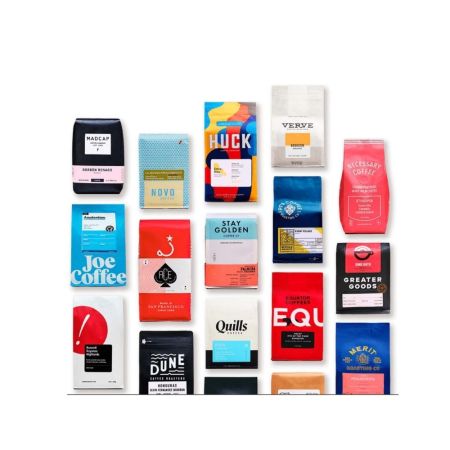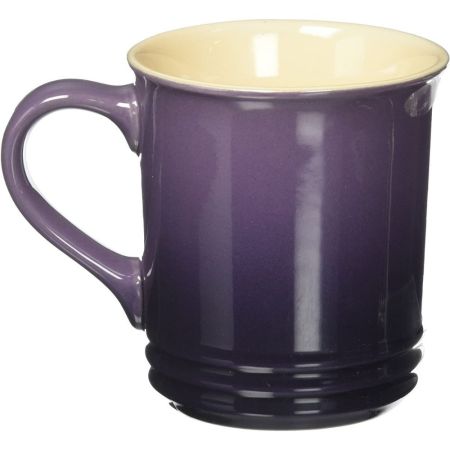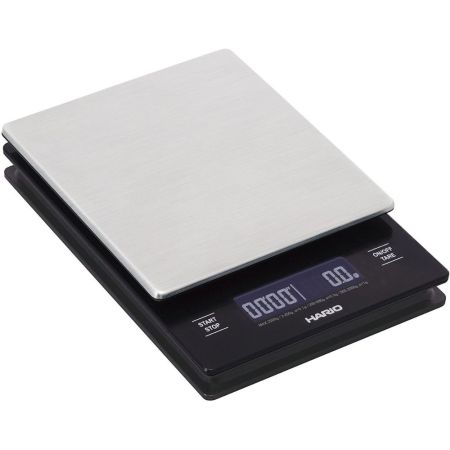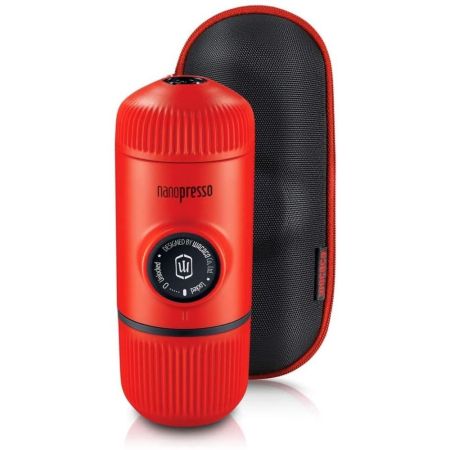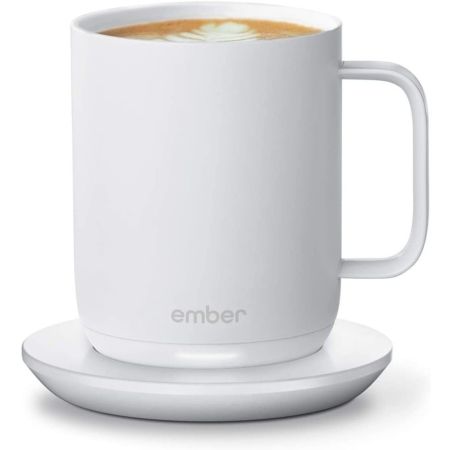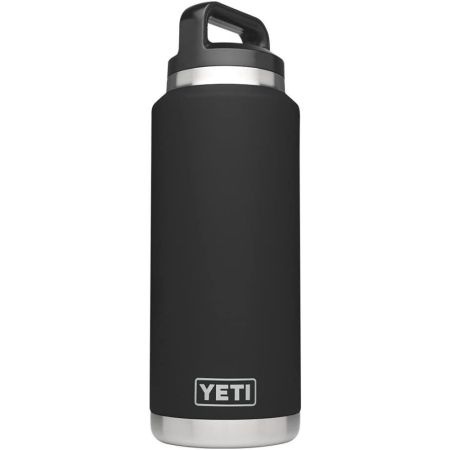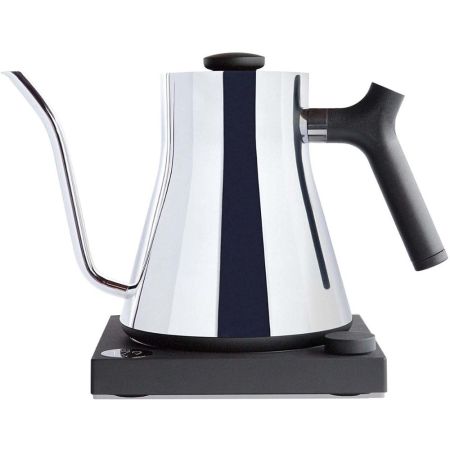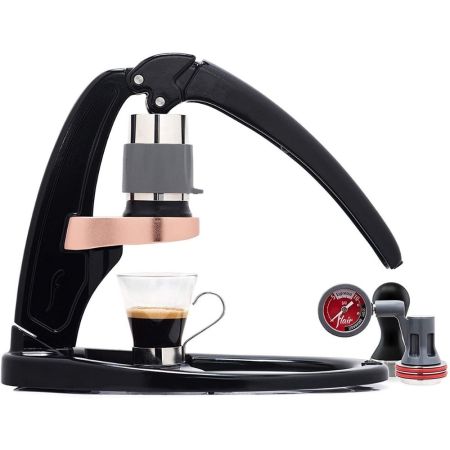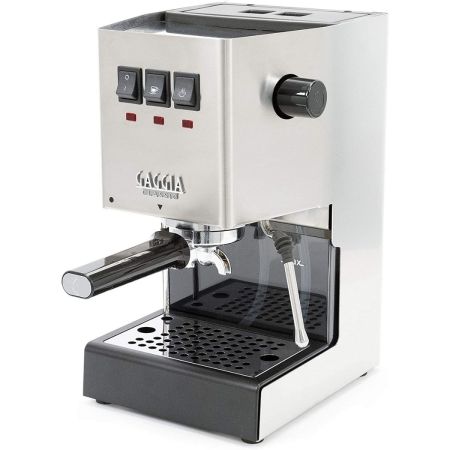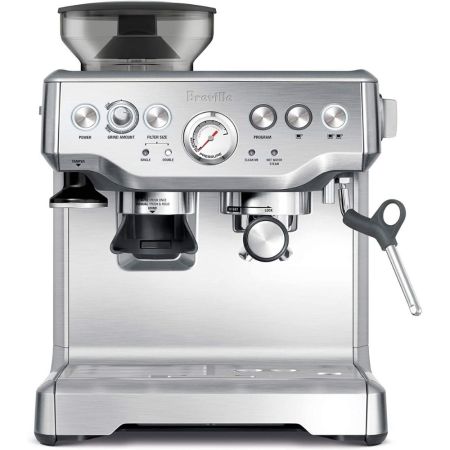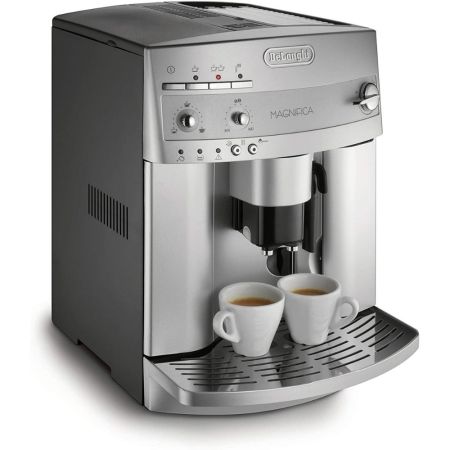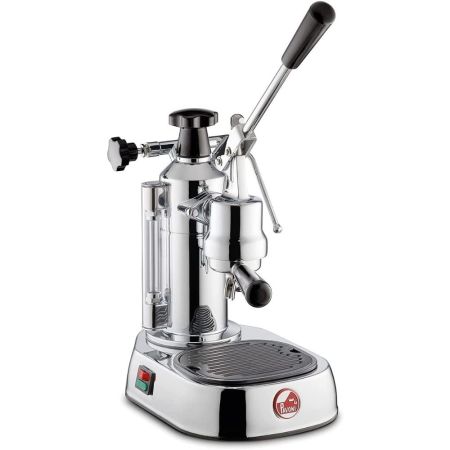We may earn revenue from the products available on this page and participate in affiliate programs. Learn More ›
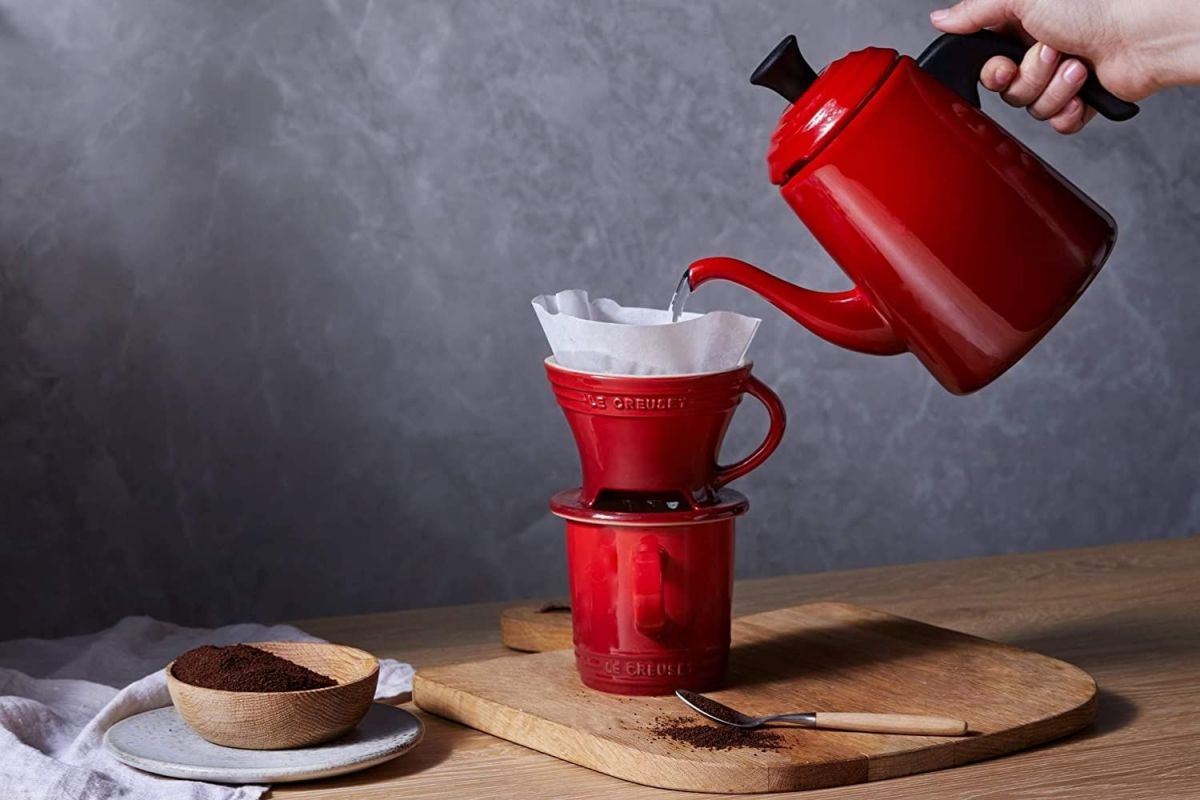
For many coffee lovers, a fresh cup of their favorite beverage is what kicks off the day and allows them to feel productive. If you’re shopping for a coffee lover, chances are they have several coffee-related items on their wish lists, from at-home coffee grinders to specialized mugs or thermoses. To make finding a gift for coffee lovers less taxing, we’ve rounded up the best options in a wide range of price points and categories. You’ll find espresso machines, coffee subscriptions, and other items the coffee lover in your life may have not known they needed.
Find the Best Gifts for Coffee Lovers at Etsy
Shop Gifts for Coffee Lovers Ideas at Macy’s
Browse Le Creuset for Top-Notch Gifts
The Best Gifts for Coffee Lovers
From classic mugs and smart mugs to manual grinders and storage containers, these gifts for coffee lovers offer something for every variety of coffee lover, whether they’re a casual connoisseur or full-on obsessed.
Gifts Under $25
Chic Storage
Unibene Bamboo Coffee Filter Holder
See ItIf there’s a better looking and better functioning storage item than the Unibene Bamboo Coffee Filter Holder, we haven’t found it. This stand container is both beautiful and sensible, a combination that makes it an excellent gift for users who appreciate organization and style. Users can leave those coffee filter boxes behind and instead store cone, square, circular, or flat-bottom filters right next to other coffee-related gadgets and tools. This durable holder is made of bamboo with a smooth and even finish. $11.98 on Amazon.
Artistic Flair
Coffee Art Print and Cafe Decor
See ItYour favorite coffee addict can display their affinity for a cup of joe on their walls with the Coffee Art Print and Cafe Decor. This urban-inspired art features images of 20 different types of coffee-based beverages with the ingredients in each listed beneath them. It’s a print that would look beautiful by itself or among other framed prints on a gallery wall. The ink used to create the images is UV- and fade-resistant and comes printed on solar white linen paper. Each piece of art is made to order and assembled by a team in Miami, Florida. $13.99 on Amazon.
Inviting Aroma
Cafe Latte Coffee Scented Candles
See ItWhen coffee lovers want to take in the scent of a fresh pot of coffee without having to make one, the Cafe Latte Coffee Scented Candles are a great substitute. These candles are handmade with all-natural soy wax with rich notes of vanilla. Each candle comes in an 8-ounce hexagon glass container. Once the wick is lit, the gift recipient’s home will fill with the warm, inviting aroma of coffee without the caffeine jitters that might come with a strong cup of joe. $14.26 from Etsy.
Compact Cup
Stojo Collapsible Travel Cup
See ItFrom coffee to smoothies, the Stojo Collapsible Travel Cup holds 12 ounces in a portable cup that collapses down to just 2 inches. It’s an excellent travel cup for the frequent commuter or for someone who has limited space to store a coffee cup or thermos. This cup is also safe to use in the microwave or put in the dishwasher and is designed to come apart and put back together with ease. It can handle both hot and cold liquids with a temperature-resistant sleeve that can handle whatever it stores. The cup is also leakproof and can fit in a standard cupholder, but it can also be used on camping trips or other outdoor travels. $15 on Amazon.
Sweet Treat
Chocolate Covered Espresso Beans
See ItFor the chocolate lover who also enjoys quality coffee, you can’t go wrong with these Chocolate Covered Espresso Beans. The premium-roasted beans are generously coated in a mix of milk chocolate and European dark chocolate for a rich and flavorful treat with a delightful crunch. Users can sprinkle them on top of an evening cup of coffee as a treat or eat them as is. They also taste great on top of cupcakes, ice cream, or chocolate pie. Each bag weighs about 9 ounces. $16.95 from Williams Sonoma.
Gifts $25 to $50
Trusty Temperature
Zojirushi Stainless Steel Travel Mug
See ItWhether the coffee lover you know likes their morning (or afternoon) beverage hot or cold, the Zojirushi Stainless Steel Travel Mug is an excellent container that keeps it at their preferred temperature for hours. The vacuum insulation and tight-fitting lid ensures regular coffee stays warm, while iced coffee stays cold. The mug’s wide mouth can fit standard-size ice cubes, and its plastic cover provides comfort when users take a sip. $26.66 on Amazon.
For Fresh Flavor
Fellow Atmos Vacuum Canister
See ItThe Fellow Atmos Vacuum Canister is a top-rated gift option for coffee lovers who want to keep their coffee bean stash as fresh as possible. The vacuum-sealed container helps remove air from the inside with the twist of the lid, limiting oxygen exposure. Once the dot on the lid drops, a green ring shows up to indicate that the canister is locked. This process keeps beans from going stale and ensures the beans keep their moisture and flavor without the threat of air or foul odors seeping in. The container can be hidden away in a pantry or stored on a countertop, since it’s stylish enough to earn a place among other coffee appliances or tools.$30 on Amazon.
Smoothest Brew
Airtight Cold Brew Iced Coffee Maker
See ItFor the freshest, richest flavor in each cup, you can give your friends or family members the Airtight Cold Brew Iced Coffee Maker. Since cold brewing produces coffee with 70 percent less acid, it results in smoother coffee concentrate that can be mixed with other beverages. Users can simply fill the coffee maker with water and coffee, let it brew, and enjoy the fruits of the coffee maker’s labor. It has an airtight seal for ultimate freshness, an easy-access handle, and it’s engineered to seamlessly fit on any refrigerator shelf. $32.99 on Amazon.
Read More: The Best Cold Brew Coffee Makers
Must-Have Mug Set
Espresso Cups Set
See ItTo elevate their morning routine, you can give the coffee lover in your life this Espresso Cup Set. These rustic, ceramic cups are handmade using a slip-casting technique that makes each one unique. The inside of each cup features a white glaze that adds contrast to the dark-gray exterior, which complements contemporary home decor. These lead-free cups are made of clay and make the coffee-drinking routine even more special. Starting at $33 on Etsy.
Sustainable Pick
Bialetti Express Moka Pot
See ItConscious coffee lovers who care about the environment can feel good about making their favorite beverage with the Bialetti Express Moka Pot, since it produces zero waste in the process. This stovetop coffee pot is compatible with gas, electric, and induction burners, so it’s sure to work with whatever appliances are in users’ kitchens. The only waste this product makes is biodegradable and compostable, and no cleaning detergents are necessary to sterilize it after use. $34.71 on Amazon.
Read More: The Best Moka Pot
Pour-Over Perfection
Le Creuset Stoneware Pour Over Coffee Cone
See ItThe Le Creuset Stoneware Pour Over Coffee Cone is a classic piece to add to a coffee drinker’s collection, especially if they prefer the pour-over method of brewing. Users can set this vibrant, sturdy cone over their favorite mug and watch as water slowly drips through the bottom to create a lovely cup of coffee. Le Creuset’s dense stoneware blocks moisture absorption, so this cone is bound to last for years without evidence of cracking or rippling. Plus, the cone is dishwasher safe, which makes cleanup a cinch. $34.95 on Amazon.
Best Coffee-Table Book
The World Atlas of Coffee: From Beans to Brewing
See ItYou can give your favorite coffee drinker a stylish and informative book with “The World Atlas of Coffee: From Beans to Brewing.” This beautiful book by James Hoffmann includes an overview of the world’s most eclectic coffee-growing locations, including Colombia, Ethiopia, and Honduras. The pages feature full-color photographs along with concise, informative text and even step-by-step guides to brewing coffee at home. Whether readers want to learn more about the history of coffee or the places that grow it, this book achieves both and looks good on a coffee table. $35 on Amazon.
At-Home Roaster
Nuvo Eco Ceramic Handy Coffee Bean Roaster
See ItCoffee drinkers who prefer to roast their own beans will likely appreciate the Nuvo Eco Ceramic Handy Coffee Bean Roaster, which achieves equal roasting from the comfort of the kitchen. This 100 percent ceramic roaster has a waffle-shaped internal structure and can roast up to 70 grams of beans at a time. Users can place the roaster on gas or electric stoves and smell the aroma of their beans as it fills their home. Then, they can enjoy a nice cup of coffee without waiting in long lines or overspending. $36.50 on Amazon.
Healthy Pick
Purity Coffee Starter Bundle
See ItCoffee lovers who care deeply about the ingredients in their food and drinks can benefit from the Purity Coffee Starter Bundle, which comes with two 12-ounce bags to try. The bags include the company’s original medium-roast whole-bean coffee and the darker roast coffee, plus five single-serve original roast coffee sachets. This coffee from Purity Coffee was created with the idea that coffee can be beneficial to the body, without the jitters or gastrointestinal side effects that sometimes occur. This package allows users to test which flavor they like for future orders. $40 from Purity Coffee.
Mess-Free Press
OXO BREW 8 Cup French Press
See ItCoffee lovers know that brewing a fresh cup can be a messy affair, but the OXO BREW 8 Cup French Press helps eliminate hefty cleanup with its exclusive GroundsLifter design. The fine mesh filter on the press keeps coffee grounds contained and out of the coffee cup, resulting in a smooth pour. The press includes a glass carafe and stainless steel exterior for a sleek design that fits in any kitchen. The appliance’s plunger knob and nonslip grip make it easy and comfortable to handle.
$41.99 on Amazon.
Classic Choice
Chemex Pour-Over Glass Coffeemaker
See ItThe Chemex Pour-Over Glass Coffeemaker is a timeless coffee maker made of high-quality, nonporous borosilicate, which doesn’t absorb odors or residue from chemicals. The patented design of this product allows coffee to be covered, refrigerated, and heated back up without losing flavor or becoming stale. It provides a pure flavor experience for coffee lovers, and it’s especially great for those who are just discovering how to make their own pour-over coffee. $44.63 on Amazon.
Always Fresh
Coffee Gator Stainless Steel Coffee Canister
See ItPROMOTED PICK
Any coffee lover knows that the quality of the beans makes all the difference in how a cup of coffee tastes. And why spend money on carefully roasted beans if you can’t store them properly? These stainless steel canisters keep beans sealed so they retain their freshness for longer. The innovative cans release carbon dioxide, which can give coffee an acidic, unpleasant taste so your coffee will taste fresher.
$49.99 on Amazon.
Gifts $50 to $100
Fast Frother
Miroco Stainless Steel Milk Steamer
See ItFrothing hot or cold milk has never been more simple than with the Miroco Stainless Steel Milk Steamer. This sleek appliance can effortlessly heat and froth milk to create tasty coffee confections at home. Its nonstick-coating interior makes it easy to clean, and its quiet operation means it won’t cause a stir if it’s being used in the wee hours of the morning. With this gift, coffee drinkers can make beautiful café creations without the higher price tag that a coffee chain or local café may charge. $50.50 at Walmart.
Most Variety
Trade Coffee Gift Coffee Subscription
See ItIf you’re unsure what type of coffee the person you’re shopping for prefers, or if the recipient likes to switch up flavors from time to time, the Gift Coffee Subscription is an excellent gift option. You can select what type of coffee they’ll receive based on their preferences, and the coffee will be roasted and delivered to their doors at peak freshness. Once you’ve signed them up, users can adjust the coffee to their liking and switch the order frequency as they go. The subscription is a great way for coffee lovers to discover new blends from top roasters and find their new favorite flavor. $60 from Trade.
Magnificent Mug
Le Creuset Stoneware 12-Ounce Mug
See ItWhether the coffee lover in your life has a collection of mugs or a select few, they’ll likely appreciate a classic, solid drinkware option like the Le Creuset Stoneware 12-Ounce Mug. The nonporous enamel finish of this blue beauty means it resists cracking, chipping, staining, and odors for years of cozy coffee drinking. The handle’s curved loop makes it comfortable to hold, whether users are sipping a freshly brewed cup of joe on their front porch or in the car on their way to work. $64.99 on Amazon.
Read More: The Best Coffee Mug
No-Fuss Grinder
Porlex Jp-30 Stainless Steel Coffee Grinder
See ItCoffee lovers who enjoy grinding their own beans will likely appreciate the simple design of the Porlex Jp-30 Stainless Steel Coffee Grinder. This tool features inner springs that help keep the grind consistent, so no bits of beans end up in the coffee. Its stainless steel body allows it to be static-free and indestructible, so it’s a tool that should last for years to come. The grinder’s ceramic burrs are also easy to clean and remain rust-free for the length of its life. $72.32 on Amazon.
Read More: The Best Manual Coffee Grinder
Precise Pour
Hario V60 Drip Coffee Scale and Timer
See ItTo get as close to a perfect cup or pot of coffee as possible, the Hario V60 Drip Coffee Scale and Timer measures both coffee extraction quantity and extraction time. The scale portion measures in 0.1-gram increments for the utmost precision, and the drip timer allows for exact bloom times and pours. This scale and timer duo is sleek in stainless steel, so it won’t be an eyesore if left on the kitchen counter. It also automatically powers off in 5 minutes, so users won’t have to hear recurring noise if they forget to turn it off. $84.50 on Amazon.
For the Traveler
WACACO Nanopresso Portable Espresso Maker
See ItFor someone who’s constantly on the go, the WACACO Nanopresso Portable Espresso Maker allows coffee lovers to drink high-quality espresso no matter where they are. This innovative machine requires no batteries or electricity to operate—just hot water and ground coffee. Users can simply place the coffee grounds inside the cap, pour hot water over them, and squeeze the compact case for an excellent espresso shot. Plus, at less than 7 inches long, it’s small enough to pack in a medium-size purse or travel case. $84.90 on Amazon.
Read More: The Best Manual Espresso Maker
For the Techy
NEW Ember Temperature Control Smart Mug
See ItThe NEW Ember Temperature Control Smart Mug makes drinking a warm cup of coffee as easy as setting a few controls on a smartphone. This mug uses a charging coaster to ensure it is in prime condition to heat delicious concoctions created by its users. Paired with the app, this mug can be set to an exact temperature to keep drinks hot for up to 1.5 hours. The mug also includes a sensor that puts it in sleep mode after 2 hours of inactivity or when the cup is empty. The mug includes a scratch-resistant ceramic coating that can be hand washed after use. $99.95 on Amazon.
Read More: The Best Mug Warmers
Gifts $100 to $250
For the Outdoors
YETI Rambler Vacuum Insulated Stainless Steel Bottle
See ItFrom ice-cold to piping-hot, the YETI Rambler Vacuum Insulated Stainless Steel Bottle has a reputation for retaining the temperature of its contents extremely well. This 32-ounce stainless steel bottle comes with double-wall vacuum insulation for the tightest seal to ensure beverages stay hot or cold for hours. It has a no-sweat design as well as a TripleHaul cap, which makes it an excellent thermos to take on trails or rugged adventures. Campers, hikers, and outdoorsy coffee drinkers can depend on this bottle to keep them hydrated, no matter where they are. $107.65 on Amazon.
Read More: The Best Coffee Thermos
Powerful Spout
Fellow Stagg EKG Electric Gooseneck Kettle
See ItCoffee lovers who like to marry form and function can appreciate the Fellow Stagg EKG Electric Gooseneck Kettle, which has a modern aesthetic matched with a spout that produces a precise stream for pour-over coffee. This model also has a 1,200-watt quick-heating element that can boil water with a to-the-degree temperature control. Its LED screen shows preferred and real-time temperatures for drip coffee, and the built-in Brew Stopwatch allows users to time their coffee extraction. $148.98 on Amazon.
Read More: The Best Gooseneck Kettle
Professional-Grade Espress
Flair Signature Espresso Maker
See ItFor coffee drinkers who can’t get enough of espresso, the Flair Signature Espresso Maker is a completely manual machine that produces handcrafted, high-quality shots of the beverage. Users can simply add water and a dose of up to 18 grams of beans to make a 40-milliliter shot with crema. This fully portable machine comes with a convenient carrying case and a detachable brewing head that makes it easy to clean. And since it’s made with cast aluminum and stainless steel, it’s built to last for years. $249 on Amazon.
Read More: The Best Manual Espresso Machine
Gifts $250 and Over
Best Espresso
Gaggia RI9380/46 Classic Pro Espresso Machine
See ItLatte art doesn’t have to be confined to an overpriced coffee shop thanks to the Gaggia RI9380/46 Classic Pro Espresso Machine. This semi-automatic machine textures milk for a velvety microfoam that pairs beautifully with its commercial steam wand. Coffee lovers can now brew their own espresso with the commercial portafilter and included single or double-shot baskets for cafe-quality results. This machine also comes with improved pump mounts so brewing is not as noisy as with previous models. $449 on Amazon.
For the Latte Lover
Breville Barista Express Espresso Machine
See ItSpecialty coffee can be made at home with the Breville Barista Express Espresso Machine. This heavy-duty appliance has an integrated grinder that turns beans into espresso in under a minute. Its low-pressure pre-infusion means flavors are evenly distributed thanks to a gradual increase in pressure. This machine has all the bells and whistles, including a precise digital temperature control and a powerful steam wand that enhances flavor and lets users create signature latte art. $599.95 on Amazon.
Read More: The Best Latte Machine
All-in-One Machine
De'Longhi Magnifica Espresso u0026 Coffee Machine
See ItThe De’Longhi Magnifica Espresso & Coffee Machine froths, grinds, and brews a consistent cup of coffee each time it’s used. This appliance’s professional-grade burr grinder has 13 adjustable settings to grind beans whichever way users please. The machine’s manual frother creates evenly textured drinks thanks to the rich and creamy mixture of steam and milk. Bonus: It has a completely detachable brew unit that’s easy to clean and self-adjusts for the perfect shot of espresso. $699.95 on Amazon.
Read More: The Best Coffee Maker with Grinder
Sturdy Construction
La Pavoni Europiccola Espresso Machine
See ItThe sturdy La Pavoni Europiccola Espresso Machine makes creating specialty coffee at home just as invigorating as going to a local café or coffee shop. This machine features all-steel construction under heavy chrome plating for a show-stopping design. It comes with a cappuccino attachment, measuring ladle, tamper, screen, and screen holder. With each pull of the level, users can expect superior espresso thanks to steam pressure and internal thermostats to keep things in check. $899 on Amazon.
How to Choose the Best Gifts for Coffee Lovers
Whether you’re up to speed on the latest coffee gadgets or have only basic knowledge of what coffee lovers might want, it’s wise to ask yourself a number of questions before selecting a gift for them. Before you add items to your cart, consider the following:
- How do they prefer their coffee? Some coffee drinkers may enjoy a more pure cup of coffee with beans they grind themselves, while others might delight in an espresso or a latte. Their preferences can help guide your purchase.
- What tools or gadgets do they already own? Maybe the coffee lover you’re shopping for could use accessories that pair well with the bigger-ticket items already in their kitchen.
- Where do they typically drink coffee? If they brew a pot at home and down a cup before commuting to work, they may need different types of mugs, warmers, or other accessories versus someone who drinks their coffee on the go or in the car.
How to Get the Best Deals on Gifts for Coffee Lovers
To get the best discounts on gifts for coffee lovers, it’s in your best interest to become familiar with online resources like Honey that will alert you when items you’ve been eyeing are marked down. Honey is a simple yet savvy browser extension that keeps track of the price of items for you, so you don’t have to do it yourself. Retailers such as Walmart and Target also offer price matching on purchases, so you can purchase coffee gadgets and other coffee-related gifts for a discounted price.
It’s also advised to look out for deals around Black Friday or Cyber Monday, when retailers slash prices on items before the holidays. Even if you don’t plan on giving holiday coffee gifts, you can stock up on items that you can gift later for likely much less than they would cost around non-holidays.
Prices listed here were accurate at the time of publication on 9/29/2021.
